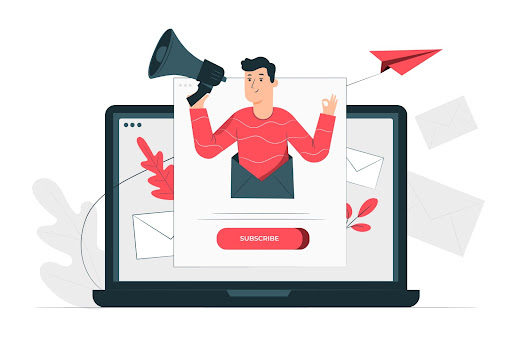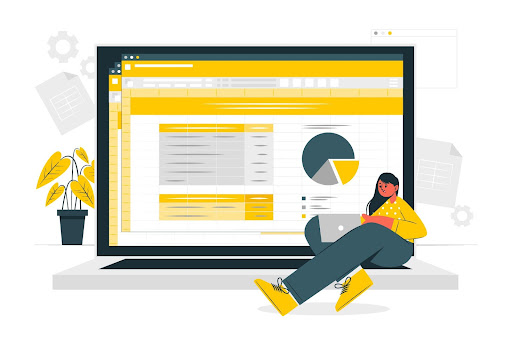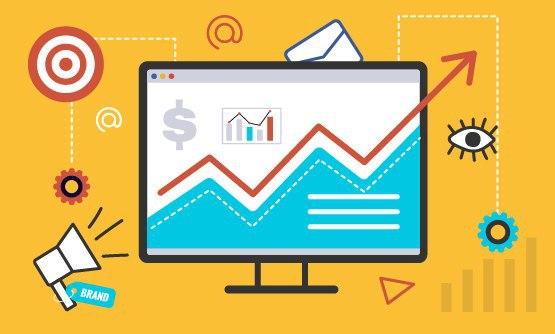In the realm of digital communication, marketing emails remain a potent tool for businesses to connect with their audience, convey messages, and drive desired actions. Crafting a successful marketing email involves a blend of strategy, creativity, and attention to detail. From captivating subject lines to engaging content and strategic segmentation, each element plays a pivotal role in ensuring your email achieves its objectives. In this comprehensive guide, we'll learn how to write marketing emails that resonate with your audience and yield desired outcomes.
Know Your Audience
Understanding your audience is the foundation of effective email marketing, especially for email copywriting. It goes beyond having a general idea of who your target demographic is. Dive deep into their preferences, behaviors, pain points, and aspirations. Consider creating detailed buyer personas that encompass their age, gender, interests, challenges, and even their preferred communication style.
Break down your audience into segments based on common characteristics. This allows you to send tailored messages that resonate with each group. For example, you might have a segment for loyal customers, one for new subscribers, and another for those who have abandoned their shopping carts.
Study how your audience interacts with your previous emails. What type of content do they engage with the most? Which calls-to-action are most effective? Analyzing their behavior provides insights into what they find valuable and guides your content creation.
Don't hesitate to directly ask your audience about their preferences. Sending out surveys or feedback forms can provide valuable insights into their needs and expectations, helping you craft more relevant emails.
Set Clear Goals
Every marketing email should have a purpose beyond just «sending something out». Defining clear and specific goals ensures that your email has a direction and a desired outcome. Here's how to write an email for advertising that will help you achieve your goals:
- Determine what you want your audience to do after reading your email. Do you want them to click a link, make a purchase, or fill out a survey? Having a specific action in mind makes your email more focused and compelling.
- Your goals should be measurable so that you can track the success of your campaign. Set key performance indicators (KPIs) such as open rates, click-through rates, email marketing conversion rates, and the number of downloads.
- Your email campaign goals should align with your broader marketing and business objectives. Whether it's increasing brand awareness, driving sales, or nurturing leads, your email goals should contribute to the larger picture.
- Define a timeframe for achieving your goals. Is this email part of a short-term promotion, a seasonal campaign, or an ongoing series? A defined timeframe adds urgency and context to your messaging.
Crafting Engaging Subject Lines
The subject line is the gateway to your email. It's the first thing your recipients see and the deciding factor on whether they open or delete your email. Crafting engaging subject lines is both an art and a science, requiring creativity and strategy.

Curiosity and Intrigue
Curiosity is a powerful human emotion that marketers can tap into when crafting subject lines. When recipients are curious, they're more likely to open your email to satisfy their curiosity. Here's how to use curiosity and intrigue effectively in your email subject lines:
- Pose Questions. Pose questions that pique recipients' interest. «Ever Wondered How to Double Your Savings?»
- Tease Solutions. Hint at a problem and offer a solution in the email. «Tired of Late-Night Snacking? We've Got the Answer.»
- Create Knowledge Gaps. Spark curiosity by presenting information that leaves a knowledge gap. «The Secret Ingredient for Perfect Skin Revealed.»
- Invoke FOMO (Fear of Missing Out). Use subject lines that suggest exclusive or time-sensitive content. «Don't Miss Your Chance to Win Big!»
- Use Intriguing Statements. Make intriguing statements that recipients want to know more about. «You Won't Believe What We've Uncovered.»
- Promise Surprises. Promise recipients a surprise or something unexpected in the email. «Open to Reveal Your Special Gift.»
- Spark Imagination. Encourage recipients to imagine something intriguing or exciting. «Imagine Your Dream Vacation… It's Closer Than You Think.»
- Tantalize with Stories. Share a brief, intriguing story that leads into the email content. «How Sarah Turned Her Passion into a Thriving Business.»
Remember, the goal of curiosity-driven subject lines is to create a sense of anticipation and excitement. Be careful not to mislead recipients or create excessive hype that the email content can't deliver. Curiosity should be a genuine invitation to discover valuable information or opportunities within the email itself.
Benefit-Driven Subject Lines
Crafting subject lines that clearly communicate the benefits recipients will gain from opening your email, significantly improving email open rates. People are more likely to engage with content that promises them value. Here's how to create benefit-driven subject lines:
- Highlight Solutions. Address a problem your audience faces and offer a solution in the email. «Say Goodbye to Clutter with Our Organizational Tips.»
- Show Results. Mention specific outcomes or results that recipients can achieve. «Increase Your Productivity by 50% with Our Time Management Techniques.»
- Emphasize Savings. If your offer involves discounts or savings, make it the focal point. «Save 20% on Your Next Purchase — Limited Time Offer!»
- Provide Knowledge: Promise to share useful knowledge or insights. «Unlock the Secrets to Successful Content Marketing.»
- Offer Convenience. Highlight how your product or service makes recipients' lives easier. «Simplify Your Meal Planning with Our Weekly Recipe Subscription.»
- Appeal to Emotions. Connect with recipients' emotions and well-being. «Boost Your Confidence with Our Personal Styling Tips.»
- Personalize Benefits. Tailor benefits to match recipients' preferences or interests. «Discover Custom Fitness Plans for Your Health Goals.»
- Address Pain Points. Identify common pain points and address them in the subject line. «Put an End to Sleepless Nights with Our Sleep Solutions.»
- Promote Exclusivity. Make recipients feel special by offering exclusive benefits. «Exclusive Access: Get First Dibs on Our New Collection.»
Benefit-driven subject lines should resonate with your audience's needs and desires. It's important to deliver on the promise you make in the subject line of the email content. When recipients see that the content aligns with the benefit mentioned, it builds trust and encourages engagement.
Call-to-Action (CTA) in Subject Lines
Incorporating a call-to-action (CTA) directly into your subject line can create a sense of urgency and encourage recipients to take immediate action. When done effectively, this can lead to higher open rates and click-through rates. Here is how to write an email marketing letter with strong CTAs in the subject lines:
- Urgency and Scarcity. Create a sense of urgency by using phrases like «Limited Time Offer» or «Last Chance.» For example, «Final Hours to Save 50% on Your Purchase.»
- Action Verbs. Use strong action verbs that convey a clear action you want recipients to take. «Unlock Your Free Ebook Now» or «Grab Your Spot Today!»
- Exclusive Invitations. Make recipients feel special by inviting them to exclusive events or opportunities. «Be Our VIP: Join the Exclusive Webinar.»
- Benefit-Focused CTAs. Highlight the benefit recipients will gain from taking action. «Transform Your Skin: Claim Your Free Skincare Guide.»
- Email Personalization. Use recipients' names in CTAs to make the message more personalized. «John, Get Your Personalized Fitness Plan Now.»
- Question-Style CTAs. Pose a question that encourages curiosity and prompts recipients to open the email for answers. «Want to Boost Your Productivity? Open Now.»
- Teaser CTAs. Tease the content of the email to spark curiosity. «Discover the Surprising Secrets of Effective Networking.»
- Outcome-Oriented CTAs. Emphasize the desired outcome of taking action. «Start Your Journey to Financial Freedom Today.»
- Reward CTAs. Promise a reward for opening the email and engaging with the content. «Open for a Special Gift Just for You.»
Writing compelling CTAs (Call-to-Actions) in the subject line can lead to higher engagement, but it's important to ensure that the content of the email aligns with the expectation set by the subject line. If the email doesn't deliver on the promised action, recipients may become disengaged or unsubscribe. Therefore, crafting subject lines with CTAs requires careful planning and alignment between the subject line and the email content.
Writing Compelling Email Content
Once you've enticed recipients to open your email, the content must deliver on the promise made in the subject line. Here's how to create email marketing copy that engages and resonates with your audience.

Segmenting Your Email Lists
Segmentation is a powerful technique that allows you to divide your email list into smaller, targeted groups based on specific criteria. This approach ensures that your emails are relevant and tailored to the interests and preferences of different segments of your audience. Here's why segmenting your email lists is crucial for effective email marketing:
- Segmenting allows you to send personalized content to each group. When recipients receive content that resonates with their interests, they are more likely to engage with your emails.
- Relevant content also leads to higher click-through rates. When subscribers find value in your emails, they're more likely to click on links or CTAs to learn more.
- Irrelevant content is a common reason for unsubscribes. Segmenting helps reduce this by ensuring that subscribers receive content that aligns with their expectations.
- Different segments of your audience are at different stages of the customer journey. Segmenting allows you to send the right content at the right time, guiding subscribers through the journey effectively.
Email segmentation strategies can be based on a single criterion or a combination of factors. The best way to send lists to segmented audiences is to use email sending software such as Atomic Mail Sender. It will help you quickly customize your campaign to different segments.
A/B Testing and Optimization
A/B testing, also known as split testing, is a method of comparing two versions of an email to determine which one performs better. It's a crucial aspect of email marketing because it helps you identify the most effective strategies to engage your audience and achieve your goals. Here's how A/B testing can contribute to your email conversion optimization efforts:
- A/B testing allows you to test various elements of your email, such as subject lines, sender names, content layout, images, CTAs, and more. By systematically testing these variables, you can gain insights into what resonates best with your audience.
- Instead of relying on assumptions or best practices, A/B testing enables you to make decisions based on real data. This approach helps you refine your email marketing strategies with evidence-backed adjustments.
- A/B testing helps you understand your audience's preferences and behaviors. For example, by testing different subject lines, you can uncover whether your audience responds better to curiosity-driven lines or benefit-oriented lines.
Examples of A/B tests you can conduct include testing the placement of the CTA button, trying different images, experimenting with the length of your email sales copy, and testing the impact of personalized subject lines.
Remember that email A/B testing requires patience and a commitment to data-driven decision-making. Over time, you'll gain valuable insights that will help you tailor your email campaigns to your audience's preferences, leading to improved engagement and better results.
Mobile-Friendly Design
In the digital era, where smartphones and tablets have become integral to our daily lives, ensuring that your email marketing campaigns are optimized for mobile devices is no longer just a suggestion — it's a critical requirement. The shift towards mobile usage has transformed the way people engage with emails, making mobile-friendly design a cornerstone of email marketing success. Here's an in-depth look at why mobile optimization is paramount and how you can create mobile optimized email that resonate effectively with users.
Why mobile optimization is important:
- A substantial portion of email opens occur on mobile devices. If your emails aren't tailored for mobile viewing, you risk delivering a subpar experience to a significant segment of your audience.
- Mobile users exhibit distinct behaviors and preferences. An email that doesn't render properly on mobile screens, requiring zooming or excessive scrolling, can lead to frustration and swift deletion.
- A well-optimized mobile email has a profound impact on engagement and conversions. When recipients can effortlessly read your content, engage with your calls to action, and navigate through the email, they are more likely to take the desired action — whether it's making a purchase, clicking a link, or signing up for an event.
Here are some email marketing tips for effective mobile optimization:
- Responsive Design. Employ responsive design principles to ensure your email adapts flawlessly to varying screen sizes. This technique guarantees that your email looks cohesive and functions seamlessly regardless of the device being used.
- Minimalistic Approach. Simplify your design for mobile. Focus on key elements, such as concise yet impactful text, clear headlines, and easily clickable buttons or links.
- Readability Matters. Opt for fonts that are legible on small screens. Avoid excessively small font sizes and intricate fonts that could be challenging to read on mobile devices.
- Single-Column Layout. Opt for a single-column layout, which is ideal for vertical scrolling on mobile screens. This layout style minimizes the need for zooming and creates a smoother user experience.
- Prominent CTAs. Calls to action (CTAs) should be prominent and easily tappable. Use buttons or large text links to encourage interaction.
- Concise Content. Mobile users have limited attention spans, so present your content succinctly and engagingly. Utilize visuals to supplement your message and maintain interest.
- Optimize Preheader Text. The preheader text provides a preview of your email's content. Craft engaging preheaders that encourage users to open the email for more.
- Thorough Testing. Always conduct rigorous testing across various mobile devices and email clients before finalizing your email. This step ensures that your design is consistent and functional across different platforms.
Analyzing and Measuring Results
While writing persuasive emails is essential, the journey doesn't end once you hit the «send» button. The effectiveness of your email campaigns can only be truly gauged through thorough analysis and measurement of results. The data you collect provides insights into what's working and what needs improvement, enabling you to refine your strategies and achieve better outcomes in the future.

Key metrics for email marketing analytics:
- Open Rate. This metric indicates the percentage of recipients who opened your email. A high open rate suggests that your subject lines and sender information are effective in capturing attention.
- Click-Through Rate (CTR). CTR measures the percentage of recipients who clicked on a link within your email. It's a strong indicator of the relevancy and effectiveness of your content.
- Conversion Rate. The conversion rate tracks the percentage of recipients who completed a desired action after clicking a link. This could be making a purchase, signing up for a webinar, or filling out a form.
- Bounce Rate. Bounces occur when an email fails to reach the recipient's inbox. Bounce rate categorizes these failed deliveries, indicating potential issues with your email list's quality.
- Unsubscribe Rate. This metric reflects the percentage of recipients who opted out of receiving future emails. Monitoring this rate helps you assess the appeal and relevance of your content.
- Engagement Rate. Engagement rate combines open, click-through, and conversion rates to provide an overall view of how recipients interact with your email.
How to schedule a bulk mailing with Atomic Mail Sender
As businesses strive to connect with their audiences on a more personal and impactful level, tools like Atomic Mail Sender have emerged as essential allies in this endeavor.
To schedule a bulk mailing with Atomic Mail Sender, follow these steps:
- Install Atomic Mail Sender. If you haven't already, download and install this program on your computer. You can also download our other tools, such as Atomic Mail Verifier to clean your lists of invalid email addresses — so you can make it even more efficient.
- Launch Sender and set it up before you start mailing. Watch our video tutorial, it will help you get it done quickly and correctly.
- Compose your email. Create your email campaign by writing the email content, subject line, and adding any images or attachments you want to include. Use our template gallery to create an eye-catching letter.
- Set up sending schedule. Select the date and time when you want your emails to start sending. Some email servers have limits on how many emails you can send per hour. To avoid triggering spam filters, you can set a specific sending rate. Our Sender will automatically adjust the speed of sending to stay within the limits.
- Start the sending process. After confirming your settings, start the sending process. Atomic Mail Sender will begin sending your emails according to the schedule you've set.
- Review and analyze results. After your emails have been sent, review the results and analyze the performance of your campaign. This can help you understand what worked well and what could be improved for future campaigns.
Conclusion
Mastering the art of crafting compelling marketing emails requires a deep understanding of your audience, clear goals, engaging subject lines, captivating content, strategic segmentation, mobile-friendly design, and continuous optimization based on data insights. By implementing email marketing best practices and strategies, you can forge meaningful connections with your audience, drive engagement, and achieve your marketing objectives. Remember, effective email marketing is a dynamic process that evolves with your audience's preferences and behaviors. Stay attentive to trends and shifts in the digital landscape to ensure your emails remain relevant and impactful.







